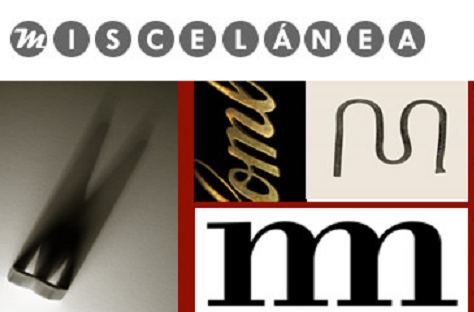La pasiva como marcador de estilo en el inglés moderno temprano: Evidencias del Corpus de Helsinki
DOI:
https://doi.org/10.26754/ojs_misc/mj.199811018Resumen
Este artículo ofrece una descripción de la dimensión estilística de la pasiva en la Edad Moderna, tal y como aparece representada en el corpus informatizado de textos ingleses de Helsinki. En la primera sección se examinan los factores estilísticos que determinan la elección de una pasiva frente a una cláusula activa. En la segunda sección, se analizan las pasivas del inglés moderno temprano para descubrir las razones de la asociación entre las construcciones pasivas y los estilos formales de ese periodo. Los datos estadísticos extraídos del corpus revelan que en el inglés moderno temprano la correlación entre la voz pasiva y los registros formales no se debe principalmente a la exigencia de impersonalidad, como se afirma para el inglés actual, y que otros factores condicionan también la preferencia por las pasivas en los registros formales del inglés.
Descargas
Citas
BIBER, D. 1988. Variation across Speech and Writing. Cambridge: Cambridge UP.
--. 1995. Dimensions of Register Variation: A Cross-linguistic Comparison. Cambridge: Cambridge UP.
BIBER, D., and E. FINEGAN. 1997. “Diachronic Relations among Speech-based and ‘Written Registers in English.” In To Explain the Present: Studies in the Changing English Language in Honour of Matti Rissanen. Ed. T. Nevalainen and L. Kahlas-Tarkka. (Mémoires de la Société Néophilologique 52). Helsiniki: Société Néophilologique. 253-76.
BRYANT, M. M. 1959. A Functional English Grammar. Boston: D.C. Heath.
CHAFE, W. L. 1976. “Givenness, Contrastiveness, Definiteness, Subjects, Topics and Points of View.” In Subject and Topic. Ed. C. N. Li. New York: Academic Press. 25-55.
CHARLESTON, B. M. 1960. Studies on the Emotional and Affective Means of Expression in Modern English. (Swiss Studies in English, 46). Bern: Francke.
CRYSTAL, D. and D. DAVY. 1969. Investigating English Style. London: Longman.
DENISON, D. 1993. English Historical Syntax. London: Longman.
DOHERTY, M. 1996. “Passive Perspectives; Different Preferences in English and German: A Result of Parameterized Processing.” Linguistics 34.3: 591-643.
DOWNING, A. 1996. “The Semantics of Get-Passives.” In Functional Descriptions. Ed. R. Hasan, C. Cloran and D. Butt. Amsterdam: John Benjamins. 179-206.
DOWNING, P. and M. NOONAN. 1995. Word-Order in Discourse. Amsterdam: John Benjamins.
FOLEY, A. and R. D. VAN VALIN, 1985. “Information packaging in the clause.” In Language Typology and Syntactic Description. Ed. T. Shopen. Cambridge: Cambridge UP. 1.299-347.
FRAJZYNGIER, Z. 1982. “Indefinite Agent, Passive and Impersonal Passive: A Functional Study.” Lingua 58: 267-90.
GIVÓN, T. 1979. On Understanding Grammar. New York: Academic Press.
--. 1981. “Typology and Functional Domains. Studies in Language 5: 163-93.
--. 1982. “Transitivity, Topicality and the Ute Impersonal Passive.” In Studies in Transitivity. Ed. P. Hopper and S. A. Thompson. New York: Academic Press. 143-60.
--. 1983. “Topic Continuity in Discourse: An Introduction.” In Topic Continuity in Discourse: A Quantitative Cross-language Study. (Typological Studies in Language 3). Amsterdam: John Benjamins. 1-41.
---. 1990. Syntax: A Functional Typological Introduction. 2 vols. Amsterdam: John Benjamins.
--. 1994. “The Pragmatics of De-Transitive Voice: Functional and Typological Aspects of Inversion.” In T. Givón (ed.): 3-44.
GIVÓN, T. and L. YANG. 1994. “The Rise of the English GET-passive.” In Voice: Form and Function. Ed. Barbara Fox and Paul J. Hopper. (Typological Studies in Language 27). Amsterdam: Benjamins. 119-49.
GOTTI, M. 1996. Robert Boyle and the Language of Science. Milano: Guerini Scientifica.
GRANGER-LEGRAND, S. 1983. The Be+Past Participle Construction in Spoken English. Amsterdam: Elsevier.
HUDDLESTON, R. 1984. Introduction to the Grammar of English. Cambridge: Cambridge UP.
JESPERSEN, O. 1933. Essentials of English Grammar. London: Allen & Unwin.
KEENAN, E. L. 1985. “Passive in the World's Language.” In Language Typology and Syntactic Description. Ed. T. Shopen. Cambridge: Cambridge UP. 243-81.
KRUISINGA, E. 1925. A Handbook of Present-Day English, I-II. Groningen: Noordhoff.
LAKOFF, R. 1971. “Passive Resistance.” Papers from the 7th Regional Meeting Chicago Linguistic Society. 7.149-62.
LANGACKER, R. W. and P. MUNRO. 1975. “Passives and their Meaning.” Language 51.4: 789-830.
LEECH, G., and J. SVARTVIK. 1975. A Communicative Grammar of English. London: Longman.
NASH, W. 1980. Designs in Prose. (English Language Series, 12). London: Longman
PALMER, F. R. 1987. The English Verb. London: Longman.
POUTSMA, H. 1914-29. A Grammar of Late Modern English, I-II. Groningen: P. Noordhoff.
QUIRK, R. et al. 1985. A Comprehensive Grammar of the English Language. London: Longman.
RAUMOLIN-BRUNBERG, H. 1991. The Noun Phrase in Early Sixteenth-Century English. Helsinki: Société Néophilologique.
RISSANEN, M., O. IHALAINEN and M. KYTÖ (compilers), 1991. Helsinki Corpus of English Texts: Diachronic and Dialectal. Helsinki: University of Helsinki.
SHIBATANI, M. 1985. “Passives and Related Constructions: A Prototype Analysis.” Language 61.4: 821-48.
SIEWIERSKA, A. 1984. The Passive: A Comparative Linguistic Analysis. London: Croom Helm.
SINHA, A. K. 1974. “How Passives are Passives.” Papers from the 10th Regional Meeting Chicago Linguistic Society. 631-42.
SLEDD, J. 1959. A Short Introduction to English Grammar. Chicago: Scott, Foresman.
STANLEY, J. P. 1975. “Passive Motivation.” Foundations of Language 13: 25-39.
STEIN, G. 1979. Studies in the Function of the Passive. Tübingen: Narr.
SVARTVIK, J. 1966. On Voice in the English Verb. The Hague: Mouton .
SWEET, H. 1898. A New English Grammar: Logical and Historical. Vol. 1. Oxford: Clarendon Press.
TURNER, G.W. 1973. Stylistics. London: Penguin
VALIN, R. D. van. 1980. “On the Distribution of Passive and Antipassive Constructions in Universal Grammar.” Lingua 50: 303-27.
VEZZOSI, L. 1996. “Passive Constructions: The Case of Anglo-Saxon.” Paper delivered at 9th ICEHL, Poznan, 25-31 August.
WEINER, J. E., and W. LABOV. 1983. “Constraints on the Agentless Passive.” Journal of Linguistics 19: 29-58.
WERTH, P. 1984. Focus, Coherence and Emphasis. London: Croom Helm.
ZANDVOORT, R. W. 1975. A Handbook of English Grammar. London: Longman.
Descargas
Publicado
Cómo citar
Número
Sección
Licencia
Derechos de autor 1998 Elena Seoane Posse

Esta obra está bajo una licencia internacional Creative Commons Atribución-NoComercial 4.0.


